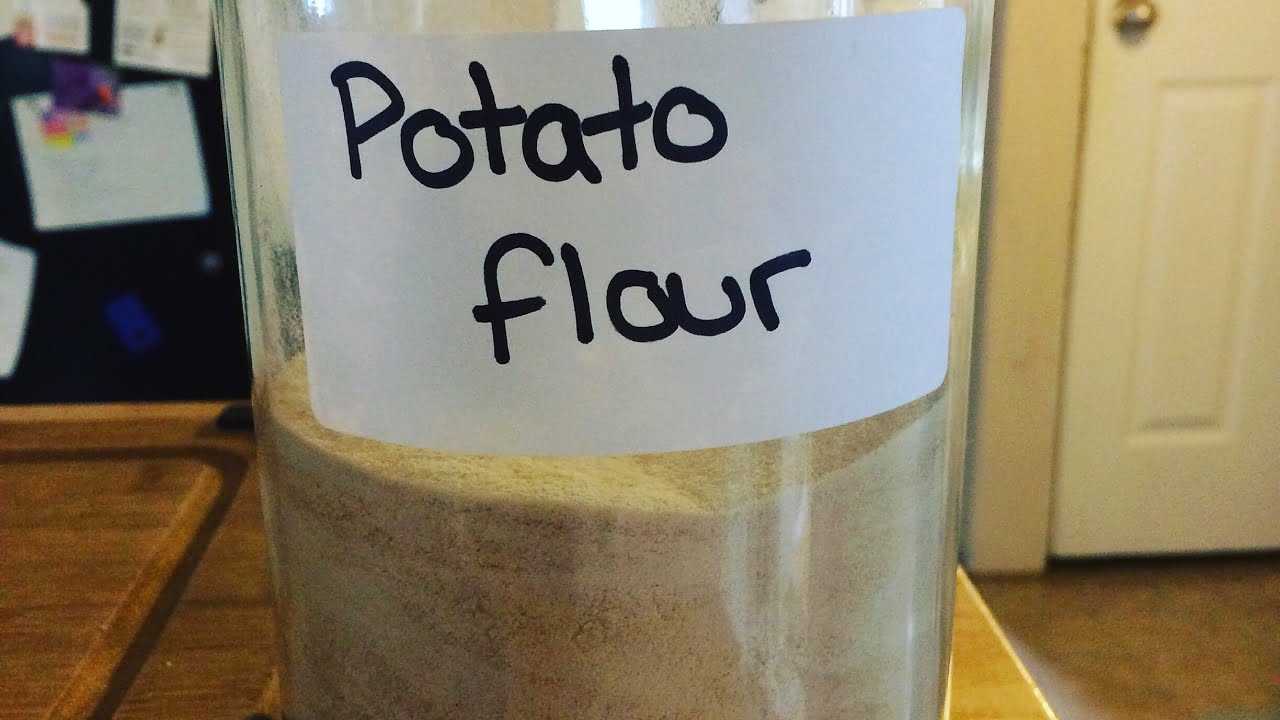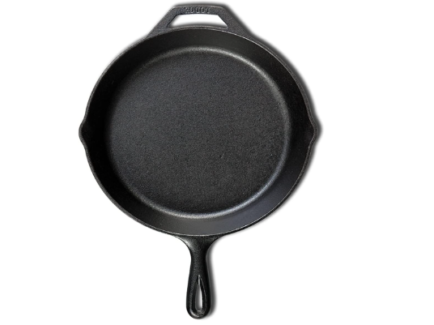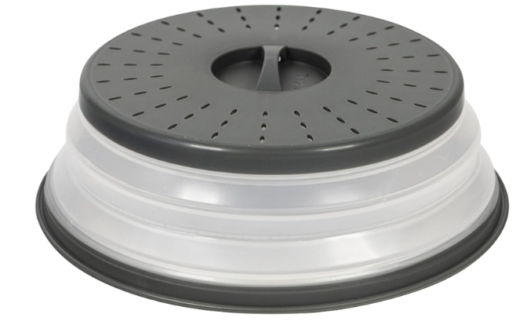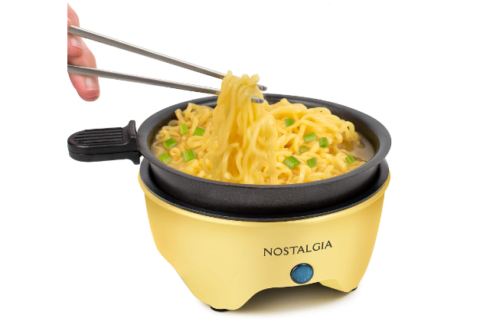
Potato flour is a gluten-free flour that is often used in baking as a substitute for wheat flour. It is made by grinding potatoes into a fine powder. Making potato flour in a grain mill grinder is a simple process that can be done at home with just a few steps.
What does potato flour look like?
Potato flour is a fine white powder that has a slightly sweet and nutty flavor. It is typically lighter in color than wheat flour and has a smoother texture. When making potato flour in a grain mill grinder, the resulting flour should be very fine and free of any lumps or chunks.
Which kinds of potato can you make in grain mill grinder?
When making potato flour in a grain mill grinder, it’s best to use starchy potatoes such as Russet or Yukon Gold. These types of potatoes have a higher starch content, which is what gives the flour its smooth texture and helps it bind together in baking. Waxy potatoes such as Red or New Potatoes are not ideal for making potato flour as they have a lower starch content and will result in a denser, less smooth flour.
Why should you make potato flour in grain mill grinder?
Making potato flour in a grain mill grinder can offer several benefits, including:
- Cost-effective: Making your own potato flour using a grain mill grinder can be more cost-effective than buying it pre-made from the store. It can be a great way to save money on specialty flours.
- Control over the process: Making potato flour at home allows you to have complete control over the process. You can choose the type of potato you use, and you can ensure that there are no additives or preservatives in the final product.
- Freshness: Homemade potato flour will be fresher than store-bought flour, which can sit on the shelf for a long time before being purchased.
- Quality: By making your own potato flour, you can ensure that it is of high quality and free from any contaminants or impurities that may be present in store-bought flours.
- Versatility: Potato flour can be used in a variety of recipes, including gluten-free baking, soups, sauces, and gravies. By making your own potato flour, you can have it on hand to use in all sorts of dishes and recipes.
How to make potato flour in grain mill grinder
Making potato flour at home using a grain mill grinder can be a simple and straightforward process. Here are the steps to follow:
- Start by washing and peeling your potatoes thoroughly. Make sure to remove any brown spots or eyes from the potatoes.
- Cut the potatoes into small pieces, about 1-inch cubes, and spread them out on a baking sheet.
- Preheat your oven to 200°F (93°C) and place the baking sheet with the potatoes inside. Bake the potatoes for 4-5 hours, or until they are completely dried out and crispy.
- Allow the dried potatoes to cool completely, then transfer them to your grain mill grinder. Make sure to follow the manufacturer’s instructions for your particular grinder.
- Grind the dried potatoes into a fine powder, which will be your potato flour. If you want an extra-fine flour, you can sift the potato powder through a fine mesh sieve.
- Store your potato flour in an airtight container in a cool, dry place. It should keep for several months.
That’s it! With just a few simple steps, you can make your own potato flour at home using a grain mill grinder.
What can potato flour be used for?
Potato flour is a versatile ingredient that can be used in a variety of ways in cooking and baking. Here are some common uses for potato flour:
- Gluten-free baking: Potato flour is a popular ingredient in gluten-free baking. It can be used to make bread, cakes, cookies, and other baked goods that are free from gluten.
- Thicken soups and sauces: Potato flour is a great thickener for soups, stews, and sauces. It adds a silky texture and can be used as a substitute for cornstarch or flour.
- Coating for fried foods: Potato flour can be used as a coating for fried foods like chicken, fish, and vegetables. It adds a crispy texture and is a good alternative to wheat flour.
- Binding agent: Potato flour can be used as a binding agent in recipes like veggie burgers, meatballs, and meatloaf. It helps hold the ingredients together and can be used as a substitute for breadcrumbs or flour.
- Flavor enhancer: Potato flour has a slightly sweet, nutty flavor that can enhance the taste of baked goods and other recipes.
- Thickener for gravies: Potato flour can be used as a thickener for gravies and other sauces. It creates a smooth texture and can be used as a substitute for cornstarch or flour.
Overall, potato flour is a versatile ingredient that can be used in many different ways in the kitchen.
How long does it take to make potato flour in grain mill grinder?
The time it takes to make potato flour in a grain mill grinder will depend on several factors, including the quantity of potatoes being processed, the power of the grain mill grinder, and the desired texture of the flour. Here is a general estimate of the time it may take:
- Preparing the potatoes: It can take about 10-15 minutes to wash, peel, and cut the potatoes into small pieces.
- Drying the potatoes: Drying the potatoes in the oven can take between 4-5 hours, depending on the thickness of the potato slices and the temperature of the oven.
- Grinding the dried potatoes: The time it takes to grind the dried potatoes into flour will depend on the power of your grain mill grinder and the texture of the flour you desire. It can take anywhere from a few minutes to 10-15 minutes.
Overall, making potato flour in a grain mill grinder can take several hours, but the actual time will depend on the specific equipment and process used.
Tips for making potato flour in grain mill grinder
Here are some tips that can help you make potato flour in a grain mill grinder:
- Choose the right type of potato: Not all potatoes are created equal. Russet potatoes are the best choice for making potato flour because they have a high starch content and a low moisture content.
- Use a sharp knife or mandolin: To ensure that your potato slices are even and thin, use a sharp knife or a mandolin to cut the potatoes into small pieces.
- Dry the potatoes thoroughly: Make sure the potatoes are completely dried out before grinding them into flour. This will help prevent clumping and ensure a smooth texture.
- Grind the potatoes in small batches: Grind the potatoes in small batches to avoid overloading the grain mill grinder. This will help ensure that the flour is ground evenly and prevents the motor from overheating.
- Sift the flour: After grinding the potatoes into flour, sift it through a fine mesh sieve to remove any large particles or lumps. This will help ensure a smooth texture.
- Store the flour properly: Store your potato flour in an airtight container in a cool, dry place. This will help keep the flour fresh and prevent it from clumping or absorbing moisture.
Overall, making potato flour in a grain mill grinder can be a simple and rewarding process with a little bit of practice and attention to detail.
Related Posts
Why Trust Us
You will find what you are looking for at Jody's Bakery. From classic to luxury brands, you'll find both. We will help you to select appliances that fit your needs, budget and lifestyle. Whether you want to stop by to learn more — or plan to make a major purchase — we’ll treat you like family and assist you every step of the way. Shop with us today to receive friendly and experienced help along the way.















This article was a fantastic blend of information and insight. It really got me thinking. Let’s dive deeper into this topic. Click on my nickname for more thought-provoking content!
… [Trackback]
[…] Read More on to that Topic: jodysbakery.com/how-to-make-potato-flour/ […]
… [Trackback]
[…] Read More here on that Topic: jodysbakery.com/how-to-make-potato-flour/ […]
… [Trackback]
[…] Find More Information here to that Topic: jodysbakery.com/how-to-make-potato-flour/ […]
… [Trackback]
[…] Information on that Topic: jodysbakery.com/how-to-make-potato-flour/ […]
… [Trackback]
[…] Read More Information here on that Topic: jodysbakery.com/how-to-make-potato-flour/ […]
Looking forward to reading more. Great post.Much thanks again. Really Cool.
I cannot thank you enough for the blog post.Really looking forward to read more.
I really enjoy the post.Really looking forward to read more. Fantastic.
… [Trackback]
[…] Read More on on that Topic: jodysbakery.com/how-to-make-potato-flour/ […]
Thanks for sharing, this is a fantastic post.Really thank you! Keep writing.
Very neat post. Fantastic.
Hey, thanks for the blog.Really thank you! Much obliged.
Very good article. Fantastic.
Great blog post. Awesome.
Thanks again for the article post. Really Great.
Say, you got a nice blog.Really thank you! Awesome.
I really like and appreciate your article.Really looking forward to read more. Much obliged.
… [Trackback]
[…] Read More on that Topic: jodysbakery.com/how-to-make-potato-flour/ […]
I value the article post.Thanks Again. Much obliged.
… [Trackback]
[…] Find More on that Topic: jodysbakery.com/how-to-make-potato-flour/ […]
Very neat article post.Really looking forward to read more. Much obliged.
Wow, great article.Really looking forward to read more. Great.
Enjoyed every bit of your blog.Much thanks again. Will read on…
Really appreciate you sharing this blog article.Really thank you! Cool.
I really enjoy the blog article.Really looking forward to read more. Cool.
Looking forward to reading more. Great article post. Keep writing.
Thanks a lot for the blog post. Cool.
Thanks for sharing, this is a fantastic article.Really looking forward to read more. Much obliged.
I really liked your blog.Much thanks again. Fantastic.
Really enjoyed this blog post.Much thanks again. Keep writing.
… [Trackback]
[…] Here you can find 29278 more Info to that Topic: jodysbakery.com/how-to-make-potato-flour/ […]
… [Trackback]
[…] Here you will find 3541 more Information to that Topic: jodysbakery.com/how-to-make-potato-flour/ […]